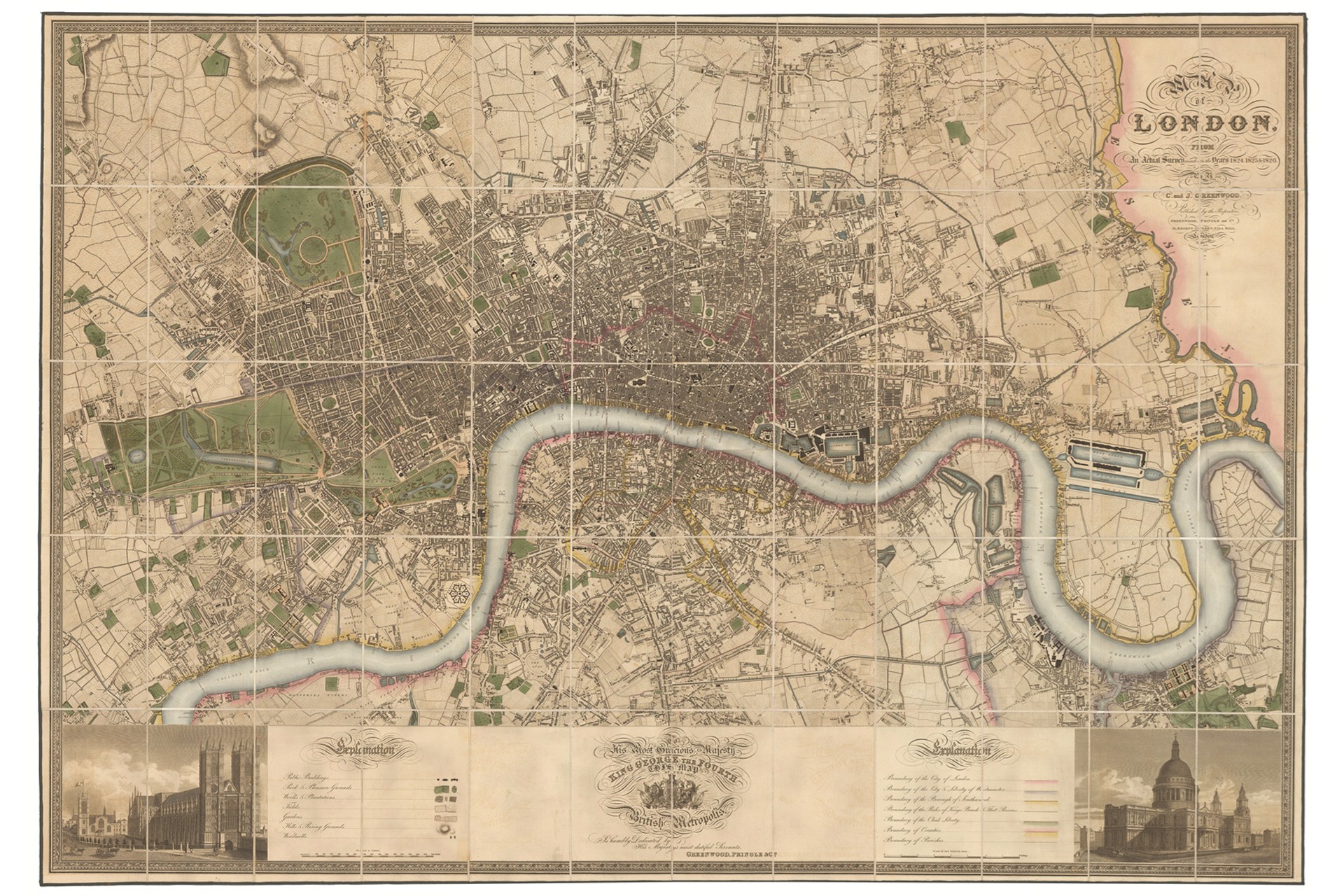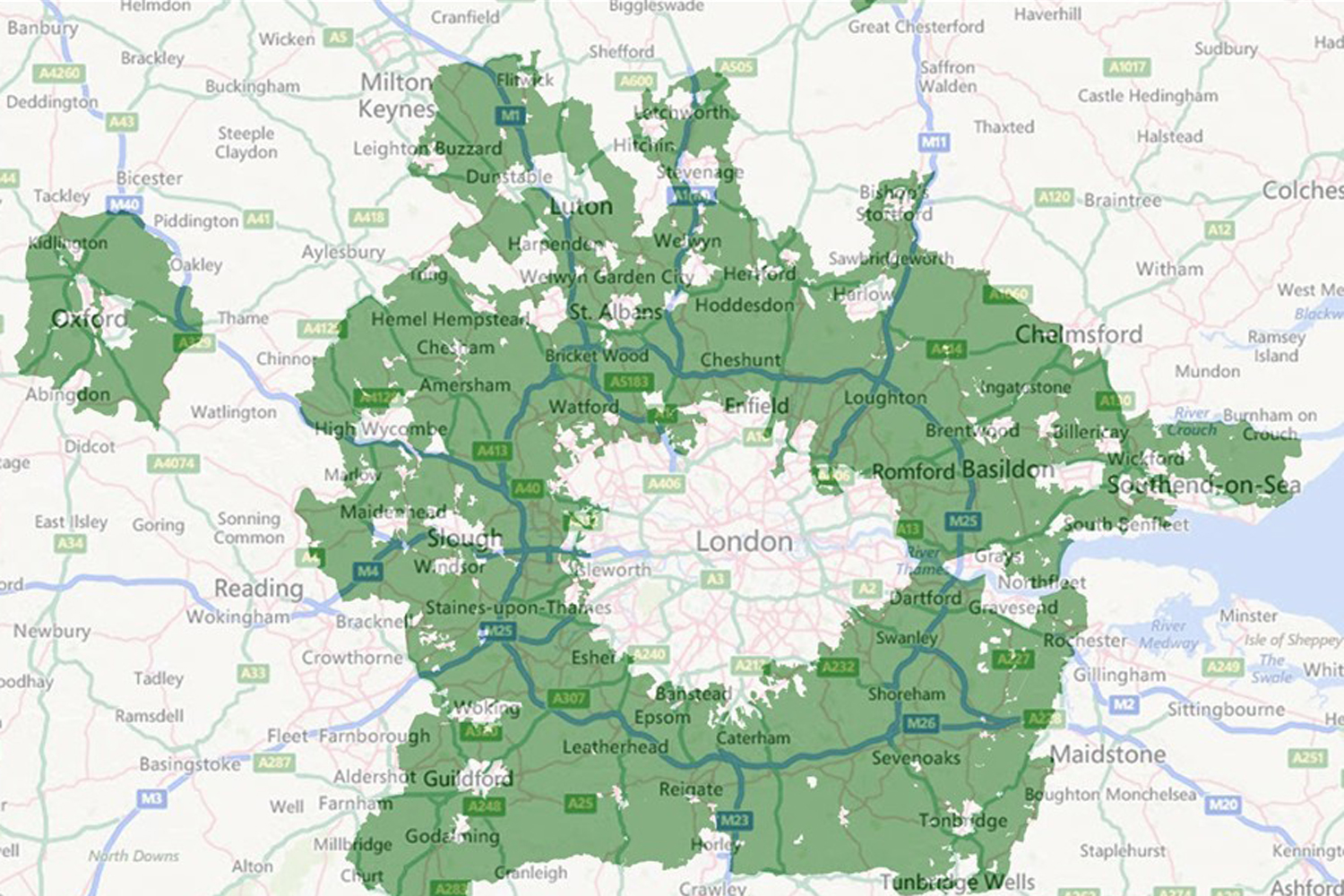Difference between revisions of "Green Spaces in London"
From Londonhua WIKI
(→Modern Green Spaces) |
(→Modern Green Spaces) |
||
| Line 53: | Line 53: | ||
==Modern Green Spaces== | ==Modern Green Spaces== | ||
<br> | <br> | ||
| − | <ref>Garside,P.L. (2006). The European city and green space: London, Stockholm, Helsinki and St Petersburg, 1850-2000. Aldershot: Ashgate.,ch. 4</ref> | + | <ref>Garside, P.L. (2006). The European city and green space: London, Stockholm, Helsinki and St Petersburg, 1850-2000. Aldershot: Ashgate.,ch. 4</ref> |
<br><br> | <br><br> | ||
Revision as of 14:56, 19 June 2017
Green Spaces in London
by Cole Fawcett
 Hyde Park |
Contents
Abstract
1) a summary of the aims of your project
2) your prior experience with humanities and arts courses and disciplines
3) your major takeaways from the experience
Clearly state a one-sentence statement that summarizes your main objective for this milestone such as "a comparison of the text of Medieval English choral music to that of the Baroque" or it may be a question such as "to what extent did religion influence Christopher Wren's sense of design?"
Introduction
Often dismissed in the dichotomy of defining terms of rural and urban, nature's presence within the city finds itself frequently overlooked. As such, London distinguishes itself with a percentage of green space at 33.0%, higher than any major city in the United States. While other cities across the world are known for larger percentages than even London, ... [1] in a survey conducted by Greenspace Information for Greater London CIC
Describe the essence of this project.
Cover what the project is and who cares in the first two sentences.
Cover what others have done like it, how your project is different.
Discuss the extent to which your strategy for completing this project was new to you, or an extension of previous HUA experiences.
Add in some narrative to describe why you did the "thing that you did", which you'd probably want to do anyway.
Section 1: Background
The city of London boasts 'an astonishing sixty seven square miles of parks, commons, community gardens, garden squares, nature reserves and churchyards to be enjoyed'[2] such a diverse quantity of green spaces within an urban setting comes only as a result of of a long evolutionary process, beginning in the late eighteenth century.
[3]
Pre-Modern Development

Like any aspect of history, nothing occurs in a vacuum. Most prestigious green spaces that would become public space derived from aristocratic and royal residences. Parks on the West End eventually became staples in London's Image as a capital city. Of these parks, Hyde Park would be the earliest one to successfully combine pleasures of the elite, including walking and riding, with more popular recreational use. In the late 1700s, population pressure on older central London began to change the character of a pre-existing green London as
older commercialized pleasure gardens began to disappear alongside earlier forms of natural green space. Several London commons, part of manorial legacies, persevered through.
The green spaces that survived this decline in public green space can be seen on Greenwood's map of 1827, clearly marked in green. at the turn of the nineteenth century, rights of public access had yet to be established in London, however commons such as Hampstead Heath and Epping Forest had become recreational areas simply by customary usage.
Following this seeming decline, or at the very least stagnation, of green space, period of innovation took place. Through aristocratic estate developers, villa architects and landscape gardeners, new forms of landscaped open space took shape over the following years. Aristocratic estates would pioneer the convention of 'the square garden', a fairly self-explanitory title. While much of these innovative practices remained private within private estates, the early nineteenth century say a stronger emphasis on public access alongside green space development. In the 1830s, Kew Gardens and botanical and zoological gardens in Regent's Park were opened to the public. Regents Park's layout, planned by John Nash in 1818, successfully adapted the picturesque design features of the aristocratic country park to an urban setting. Nash's protégé, James Pennethorne, contributed largely to the shaping of the park's landscape, emphasizing an English style of landscaped urban park with ornamental water features. Two standout green spaces of this era were Victoria(1845) and Battersea Park (1860), which, as the largest and most costly, exemplified the concept of the people's park.
[5]
Green Spaces' Introduction to the Modern Era
The hundred years following the 1860s saw a significant expansion of green space in London. Through this, much of the ground work on which London built its diverse array of green spaces came into being. These years saw the regulation of commons and the formation of parks, communal gardens and smaller recreational areas across London's urban landscape. The number of commons acquired increased in the 1870s and small open spaces saw proliferation in the 1880 to 1890s. A steady progress of park creation dominated the 1880s to the 1930s. Over this period, metropolitan expansion and changing patterns of recreational activity in the years following World War I, green spaces saw a large diversification.
Following the first World War, professional and political focus turned to examine to the future of London and quality of life of Londoners. Persistent atmospheric pollution proved a dominant issue pressing the city, emphasized by repeated episodes of city-wide smoke fogs. Subsequently, a call for exposing Londoners to more air and light came into action. At the same time, popular interest in outside play and keeping fit had grown in the inter-war years, which called for access to playing fields and recreational facilities. Works representative of a new generational awareness of the need for open space provisions with a planned approach to reconstruction of central London, with more effective control over land. A number of planners and environmental reformers held to a common belief in the possibility of raising the tone of society through recreating a sense of community and civic duty, a mentality evolved into London's so-called "Garden City movement." One of such advocates,Sybilla Gurney, described the movement as one that seeks, "to transform the modern congeries of persons into a real community - to make citizens as well as cities - and to restore the interaction of town and country".
London's long relationship with urban green spaces aptly defies simplicity. From individual activists to city officials to politicians to the actual landowners, the path by which London as a host of green spaces relied on all these constituents to come to a consensus of what London as a city should and ought to be. An incredible amount of interests were deeply involved in the social construction of London's green spaces: local residents, park and garden users, the staff of parks departments, school authorities, institutions, clubs, and societies, and a varitety of propery interests all had a part to play. This period undoubtedly saw a developing agreement over the value of open spaces, as well as illustrating that unfortunately there was no straightforward consensus but contained problematic elements like saving the London commons. Pressures like this only intensified in the aftermath of WWII.
[6]
Modern Green Spaces
Contemporary Green Spaces
The importance of green spaces in towns and cities has been recognized to varying degrees since the 19th century. The apparent value of green spaces in providing an escape from widespread urban air pollution serving as a major driver in creating new parks and green spaces. Over the last 20 years, a rise in interest has taken shape for quality and quantity of green space in urban areas. Three major factors have contributed to this trend: 1) concern about the decline in the quality of green spaces, due largely to low priority in the political agenda on national and local levels, 2) emphasis on the necessity for more intensive development in urban area, informed by "the hight-density 'compact city' " as the model for European cities and where green spaces fit into that, and 3)Improved evidence base supporting the benefits of urban green space, and environmental social and economic value to society.
Brown spaces also need to be taken into account
upsurge reflected as increase in research and professional activity In the UK a number of key documents produced in the last decade has led to government recognition of the vital importance of urban parks and green spaces as key components of urban environments
significance of urban green space on the developing urban environment and urban city life recognised by the Urban Task Force Report and the Urban White Paper, DETR 2000
[8]
Section 2: Deliverable

In this section, provide your contribution, creative element, assessment, or observation with regard to your background research. This could be a new derivative work based on previous research, or some parallel to other events. In this section, describe the relationship between your background review and your deliverable; make the connection between the two clear.
Subsection 1
Gallery
- .jpg
Caption 1
- .jpg
Caption 2
- .jpg
Caption 3
- .jpg
Caption 4
Conclusion
In this section, provide a summary or recap of your work, as well as potential areas of further inquiry (for yourself, future students, or other researchers).
References
- ↑ % of public green space (parks and gardens). (2015). Retrieved June 19, 2017, from http://www.worldcitiescultureforum.com/data/of-public-green-space-parks-and-gardens
- ↑ Billington, J., & Lousada, S. (2003). Introduction. In London's Parks and Gardens (p. ii). London: Frances Lincoln.
- ↑ Nilsson, L., Nolin, C., Deland, M., & Clark, P. (2006). The European city and green space: London, Stockholm, Helsinki and St Petersburg, 1850-2000. Aldershot: Ashgate.,ch. 3
- ↑ Fowler, L. (2013, June 7). London in vintage maps. Retrieved June 19, 2017, from http://www.cntraveller.com/photos/photo-galleries/vintage-maps-of-london
- ↑ Nilsson, L., Nolin, C., Deland, M., & Clark, P. (2006). The European city and green space: London, Stockholm, Helsinki and St Petersburg, 1850-2000. Aldershot: Ashgate.,ch. 3
- ↑ Nilsson, L., Nolin, C., Deland, M., & Clark, P. (2006). The European city and green space: London, Stockholm, Helsinki and St Petersburg, 1850-2000. Aldershot: Ashgate.,ch. 3
- ↑ Garside, P.L. (2006). The European city and green space: London, Stockholm, Helsinki and St Petersburg, 1850-2000. Aldershot: Ashgate.,ch. 4
- ↑ Swanwick, Carys, Nigel Dunnett, and Helen Woolley. "Nature, Role and Value of Green Space in Towns and Cities: An Overview." 29.2 (2003): 94-106. Web. 14 June 2017.
- ↑ Letters to the editor: Dont destroy Londons green belt. (2016, March 02). Retrieved June 19, 2017, from http://www.standard.co.uk/comment/letters/letters-to-the-editor-don-t-destroy-london-s-green-belt-a3194126.html
External Links
http://users.bathspa.ac.uk/greenwood/imagemap.html - Website dedicated to an detailed breakdown analysis of Greenwood's Map of 1827